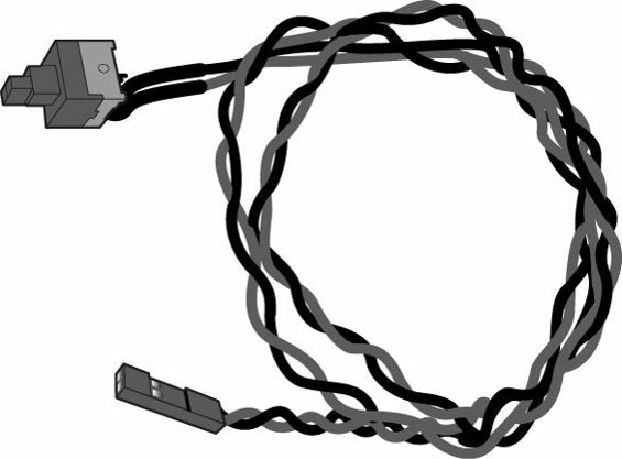Hardware Reference
In-Depth Information
the PS_ON signal at either 3.3V or +5V. This signal is then routed through the motherboard to the
remote switch on the front of the case. When the switch is pressed, the PS_ON signal is grounded.
When the power supply sees the PS_ON signal drop to 0.8V or less, the power supply (and system) is
turned on. Thus, the remote switch in a system using an ATX or newer power supply carries up to
only +5V of DC power, rather than the full 120V-240V AC current like that of the older AT/LPX
form factors.
The actual power switch used in ATX systems is normally a tiny momentary contact push button
switch, which is connected to the motherboard front panel header via a tiny two-pin connector (see
Figure 18.16
)
. When the button is pushed, the motherboard then grounds the PS_ON signal in the main
20/24-pin power connector, causing the power supply to turn on.
Figure 18.16. ATX power switch.
Tip
If your power switch has failed or you want to power on an ATX or newer power supply
without having a switch connected to the motherboard, you can actually use a paperclip as a
temporary switch. To do this, short the PS_ON (green) wire to the adjacent ground (black)
wire by using a paperclip bent into a U shape and then jam it into the back of the connector,
such that the ends make contact with the terminals inside (see
Figure 18.17
)
. This acts as a
jumper that performs the same function as the switch, and it causes the unit to power on.







